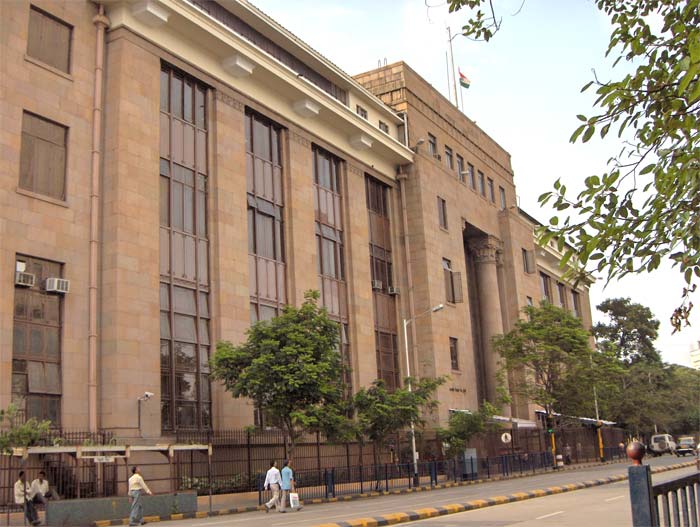This article has been written by written by Pranav M. Khatavkar.
It has been published by Rachit Garg.
Table of Contents
Introduction
The Reserve Bank of India (“RBI”) introduced a “Framework for Acceptance of Green Deposits” (“Framework”) on 11 April 2023. With the enactment of the Framework, India has now forayed into the globally-upcoming field of “Green Finance.” The Framework is slated to be enforced with effect from 01 June 2023.
The fundamental premise behind the enactment of the Framework seems to be twofold: firstly, to encourage banks and financial institutions to engage more in environment-related causes, and second, to regulate the activities of banks and financial institutions in the field of “Green Finance” (as defined under the Framework and elucidated further in this article).
The Framework applies largely to all banks, financial institutions, and to deposit-taking non-banking financial companies (hereinafter collectively referred to as “Regulated Entity/Entities” as the case may be). Whereas, the Framework categorically exempts “Regional Rural Banks,” “Local Area Banks,” and “Payment Banks” from its scope and ambit.
Green Finance & Green Deposit: An Overview
The International Organization for Standardization (ISO) in its report on Green and Sustainable Finance has stipulated that “green finance is one of a number of terms used to describe activities related to the two-way interaction between the environment and finance and investment.” The report further states that green finance includes “climate finance,” but it excludes the “social and economic aspects.”
The definition of “Green Finance” (hereinafter referred to as “Green Finance”) as it appears in the Framework, includes within its scope and ambit activities such as lending to or investing in environmental projects that contribute to “climate risk mitigation,” “climate adaptation and resilience,” and environmental projects that contribute to “other climate-related or environmental objectives such as biodiversity management and nature-based solutions,” etc.
Whereas, as per the scheme of the Framework, the term “Green Deposit” is a constituent of the Green Finance universe. The Framework states that in order to qualify as a “Green Deposit” (hereinafter referred to as “Green Deposit”), a deposit should satisfy the following criteria: (i) it must be an interest-bearing deposit; (ii) it must be received by a Regulated Entity for a fixed period; and (iii) the proceeds of such a deposit must be earmarked for being allocated towards Green Finance.
Denomination, Interest Rates and Tenor of Green Deposits
As per the Framework, Regulated Entities can issue Green Deposits either as cumulative or non-cumulative deposits. Upon maturity, the green depositor can either renew or withdraw the Green Deposit. Green Deposits shall only be denominated in the Indian National Rupee (INR).
The Framework mandates that the provisions of the RBI circulars pertaining to interest rate on deposits, deposit-taking non-banking financial companies, and housing finance companies shall apply mutatis mutandis to the Framework.
Board-Approved Policy and Financing Framework for Green Deposits
Regulated Entities are required to conceive a board-approved policy that must contain stipulations on the issuance and allocation of Green Deposits. Further, Regulated Entities are also required to put in place a “Financing Framework” (hereinafter referred to as “Financing Framework”) that should contain detailed stipulations on the effective allocation of Green Deposits.
Some of the stipulations that the Regulated Entities are required to make in their Financing Framework pertain to the classification of the environmental projects that may be financed from the Green Deposit proceeds, the third-party verification/assurance following the allocation of the Green Deposit proceeds, etc.
Regulated Entities are required to upload the copies of the aforementioned board-approved policy as well as the Financing Framework on their respective websites. Additionally, the Framework requires the Regulated Entities to get their respective Financing Frameworks reviewed by an external reviewer, and to also upload the report of the external reviewer on their website before implementing the Financing Framework.
Use of Green Deposit Proceeds
As per the Framework, the Regulated Entities are required to allocate the proceeds raised from their Green Deposits in accordance with the official Indian green taxonomy (“Taxonomy”). However, as of the date of the introduction of the Framework, the Taxonomy has not been codified.
Therefore, as an interim measure, the RBI has included an indicative list of eligible projects in the Framework, towards which the Regulated Entities can prospectively allocate their Green Deposit proceeds. The list specifies the particular sector as well as the description of the eligible projects in that particular sector towards which the Regulated Entities can prospectively allocate their Green Deposit proceeds. For instance, one of the prescribed sectors in the list is “Climate Change Adaptation.” Against this particular entry in the list, the description for the eligible project is- “projects aimed at making infrastructure more resilient to impacts of climate change.”
Other key environmental sectors covered by the list are renewable energy, clean transportation, sustainable water and waste management, green buildings, etc.
The Framework has also categorically excluded certain types of environmental projects from its scope and ambit. Some of the key exclusions from the Framework are nuclear power projects, direct waste incineration, landfill projects, hydropower plants larger than 25 MW, etc.
Third-Party Verification/Assurance and Impact Assessment

Regulated Entities are required to get the allocations from the Green Deposits verified and audited from independent third-party verification/assurance service providers. As per the Framework, the third-party verification/assurance report should stipulate whether the proceeds from the Green Deposit have been deployed in accordance with the indicative list of eligible projects (as detailed above), the criteria for project evaluation and selection, information on management of proceeds from Green Deposits, etc. Regulated Entities are mandated to upload a copy of the third-party verification/assurance report on their websites.
Impact Assessment Report
Regulated Entities (with the assistance of external firms), are required to prepare an annual “Impact Assessment Report” (hereinafter referred to as “IAR”) that is intended to assess the impact of the monies lent or invested in Green Finance activities. An illustrative IAR has been annexed to the Framework.
The Framework also states since impact assessment is an evolving concept, Regulated Entities may volunteer to prepare IARs for the Financial Year 2023-24; however, Regulated Entities are required to mandatorily get IARs prepared with effect from FY 2024-25.
Regulated Entities are also mandated to upload a copy of the IAR on their website.
Reporting and Disclosures
Regulated Entities are required to place a review report before their Board of Directors within three months from the end of a particular financial year. The review report should contain details such as the amounts raised pursuant to the Green Deposits, the environmental projects to which the Green Deposit proceeds have been allocated, etc.
Observations and Recommendations
The Framework has been codified with the simple yet noble objective of providing monetary encouragement to environment-related causes and activities. From that standpoint, the current version of the Framework is robust and conscientious.
Nevertheless (and as is the case with the first-instance version of any policy directive/mandate), there seems to be further room improvement and enhancement in the Framework. Therefore, elucidated below, are some of my observations and corresponding recommendations in relation to the scheme of the Framework.
| Observations | Recommendations |
| The Framework requires the Regulated Entities to enact a board-approved policy as well as a Financing Framework primarily in relation to the issuance and allocation of Green Deposits. This could prospectively prove to be a repetitive exercise. | It is recommended that the Framework be amended so as to enable the Regulated Entities to enact a single policy/framework on the issuance and allocation of Green Deposits. |
| The indicative list of eligible projects towards which the Green Deposit proceeds can be prospectively allocated by the Regulated Entities is restrictive. For instance, one of the prescribed sectors in the indicative list is “Climate Change Adaptation.” Against this particular entry in the list, the description for the eligible project is- “projects aimed at making infrastructure more resilient to impacts of climate change.” A challenge could prospectively arise if an environmental project that studies the impact of climate change seeks funding. In such a scenario, the Regulated Entity might be constrained to deny financial assistance to this particular environmental project simply because that project’s description does not fall within the description. | It is recommended that the list be broadened to include varied types of environmental projects. |
Conclusion
Enactment of the Framework is one step in the right direction towards making India into a green economy. With the regulatory recognition of Green Deposits, Regulated Entities are likely to feel more encouraged to extend financial assistance to and invest in green initiatives. The Framework in its current shape and form is certainly robust and conscientious, however, as stated above, there are certain areas in the Framework where there’s additional scope for improvement.
Students of Lawsikho courses regularly produce writing assignments and work on practical exercises as a part of their coursework and develop themselves in real-life practical skills.
LawSikho has created a telegram group for exchanging legal knowledge, referrals, and various opportunities. You can click on this link and join:
Follow us on Instagram and subscribe to our YouTube channel for more amazing legal content.
 Serato DJ Crack 2025Serato DJ PRO Crack
Serato DJ Crack 2025Serato DJ PRO Crack










 Allow notifications
Allow notifications



